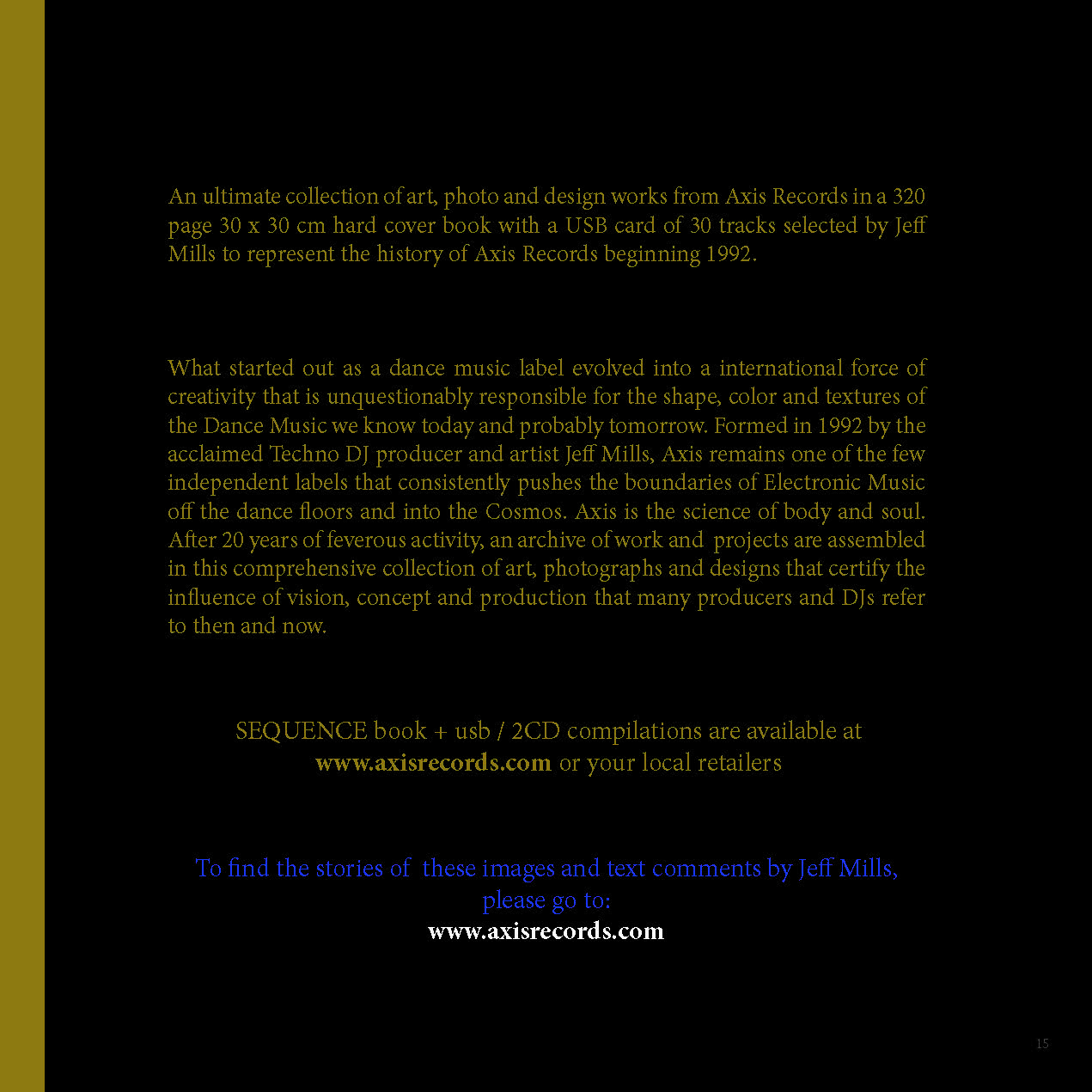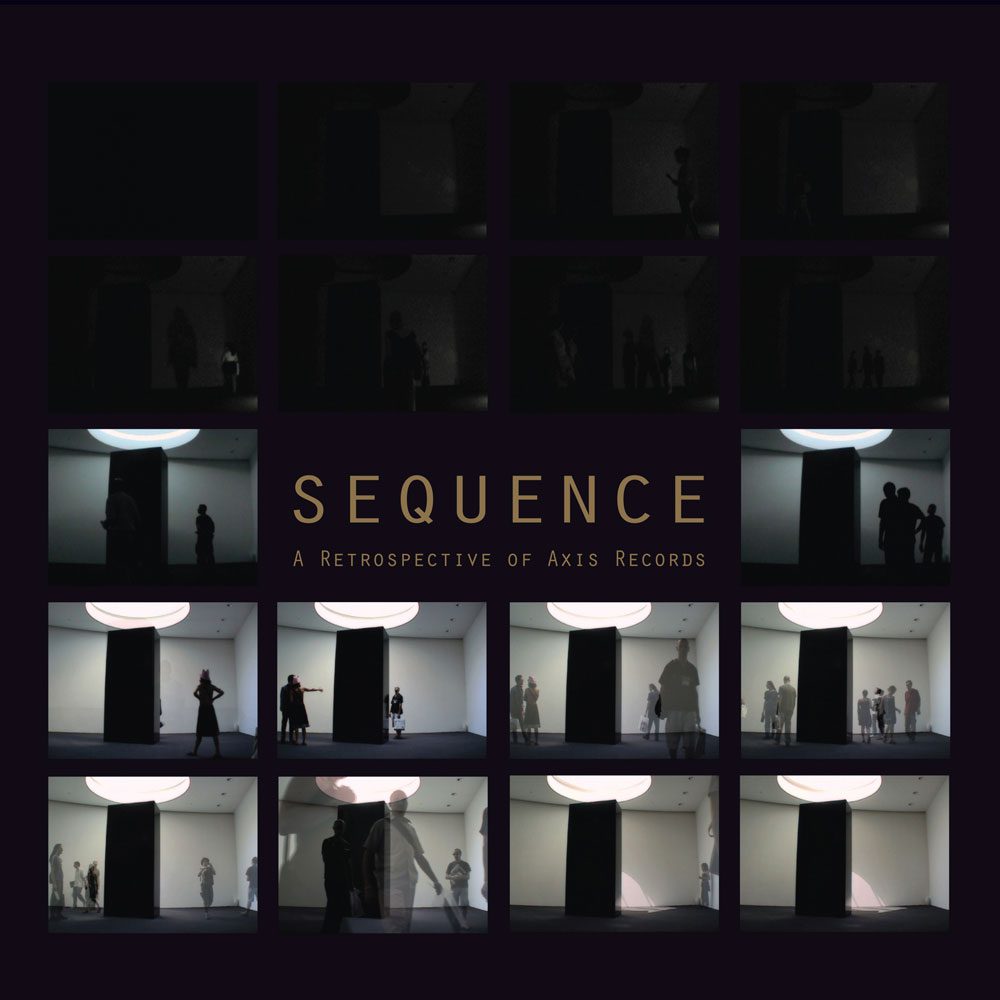SEQUENCE booklet for Borshch Magazine
All text written by Jeff Mills

The purpose of this booklet and collection of images taken from the Sequence book of Axis Records. It’s to show how ideas, subjects and concepts lead to the birth of musical and artistic creations.
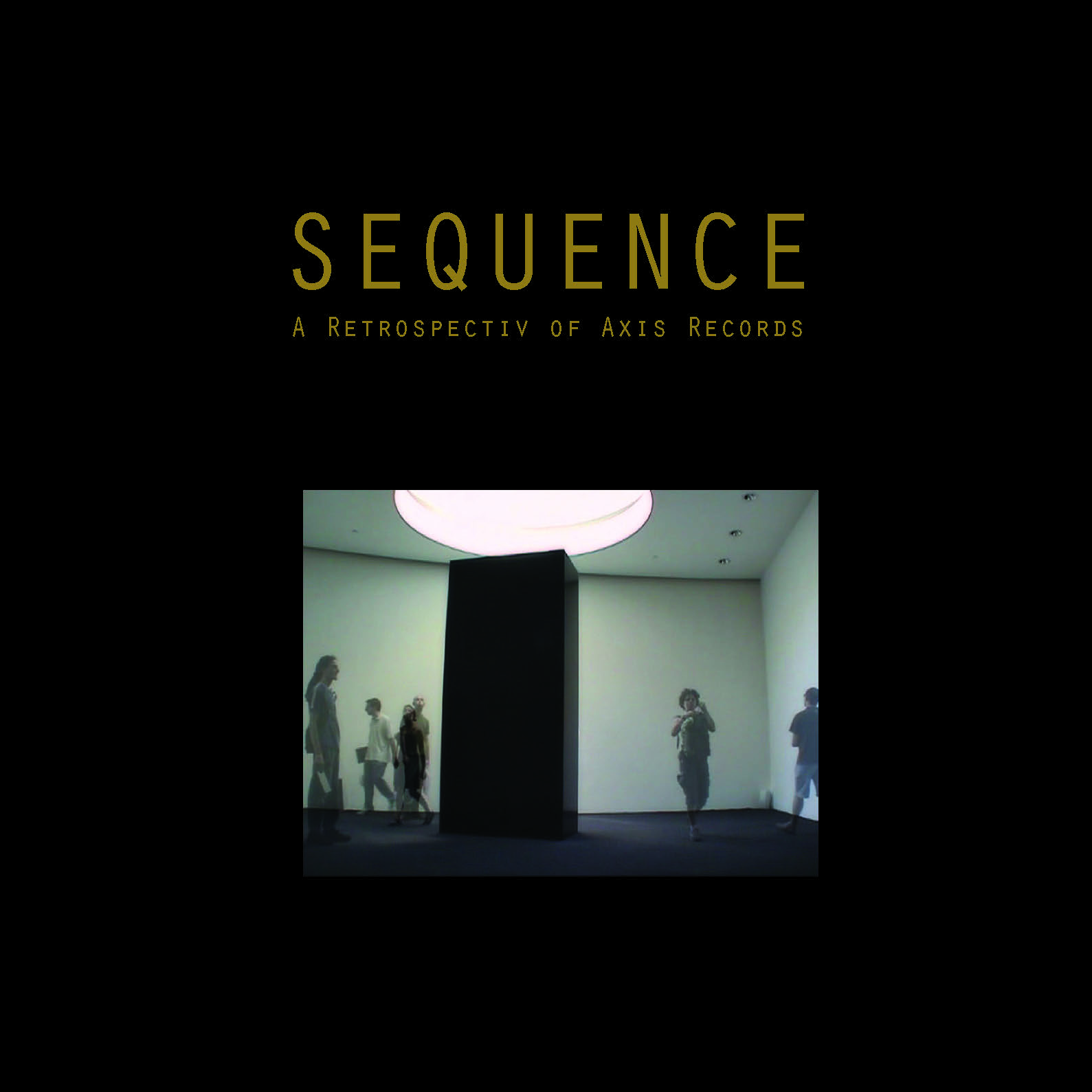
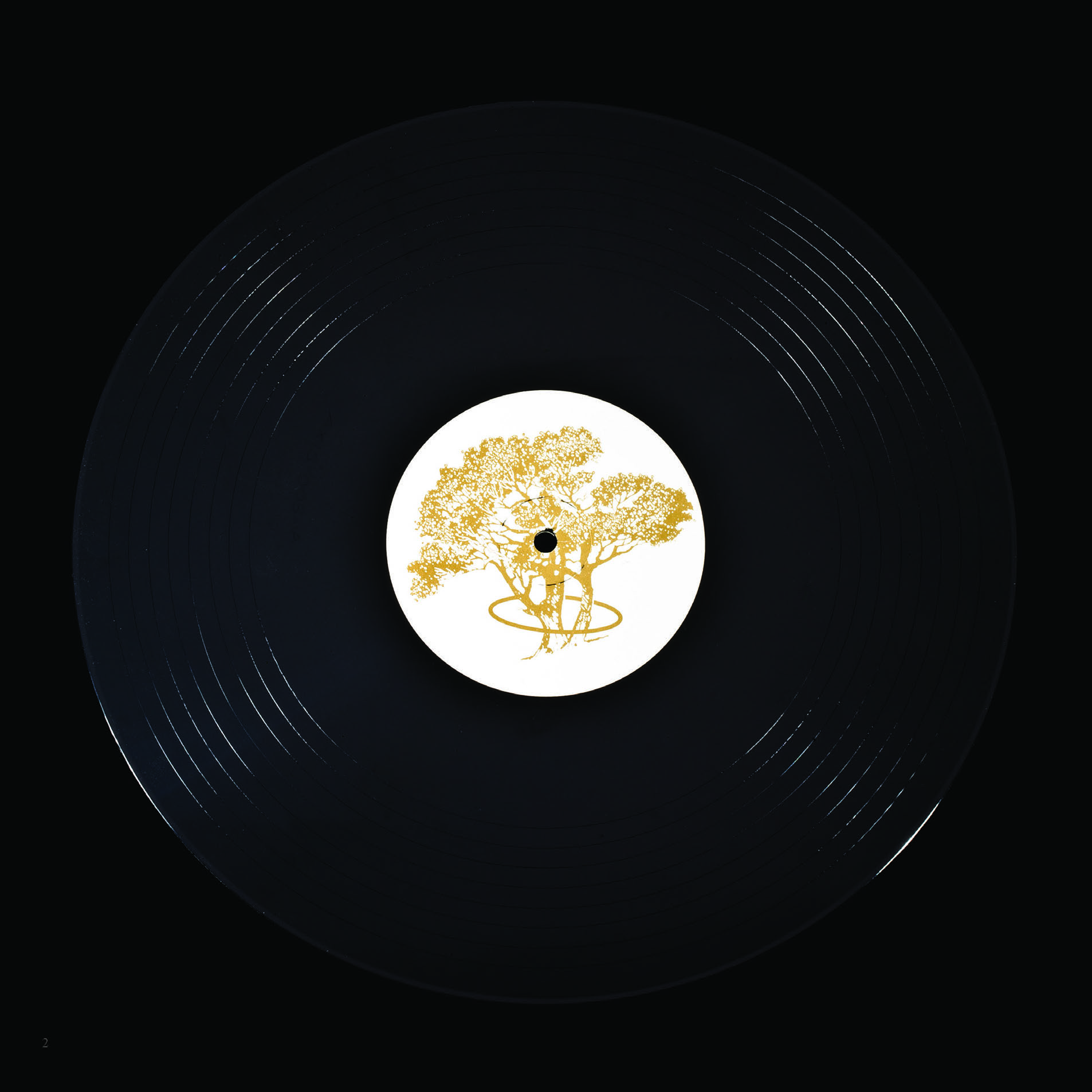
Cycle 30 12”vinyl EP – Jeff Mills
(1994)
(Pages 2 and 3)
The concept refers to psychological cycles of trend and preference that occur roughly every thirty years, when humans tend to repeat their experiences, giving a formula that one can strategically calculate. The symbol of the tree refers to the cycles that are shown when the trunk of the tree is horizontally cut and exposed.
Cycle 30 is signified by a unique mastering technique crafted by the late consummate mastering engineer Ron Murphy, where 8 single locked grooves were cut into the A-side of the vinyl symbolizing the tree’s inter-loops. Representing the growth rings, each ring-like loop represents 30 years. Two things were achieved by the design of this release. By the reducing the track down to a infinite running loop reinforced a vision in terms how Music and its format could become more simplified, allowing even more room for listeners to interpret its purpose, helping paved the way for the style of Minimal Techno we know today. The second objective was to show how the format of vinyl could physically display the concept. Not just used as a carrier of sound, but also as a symbol of how Techno Music has the ability to display something tangible.
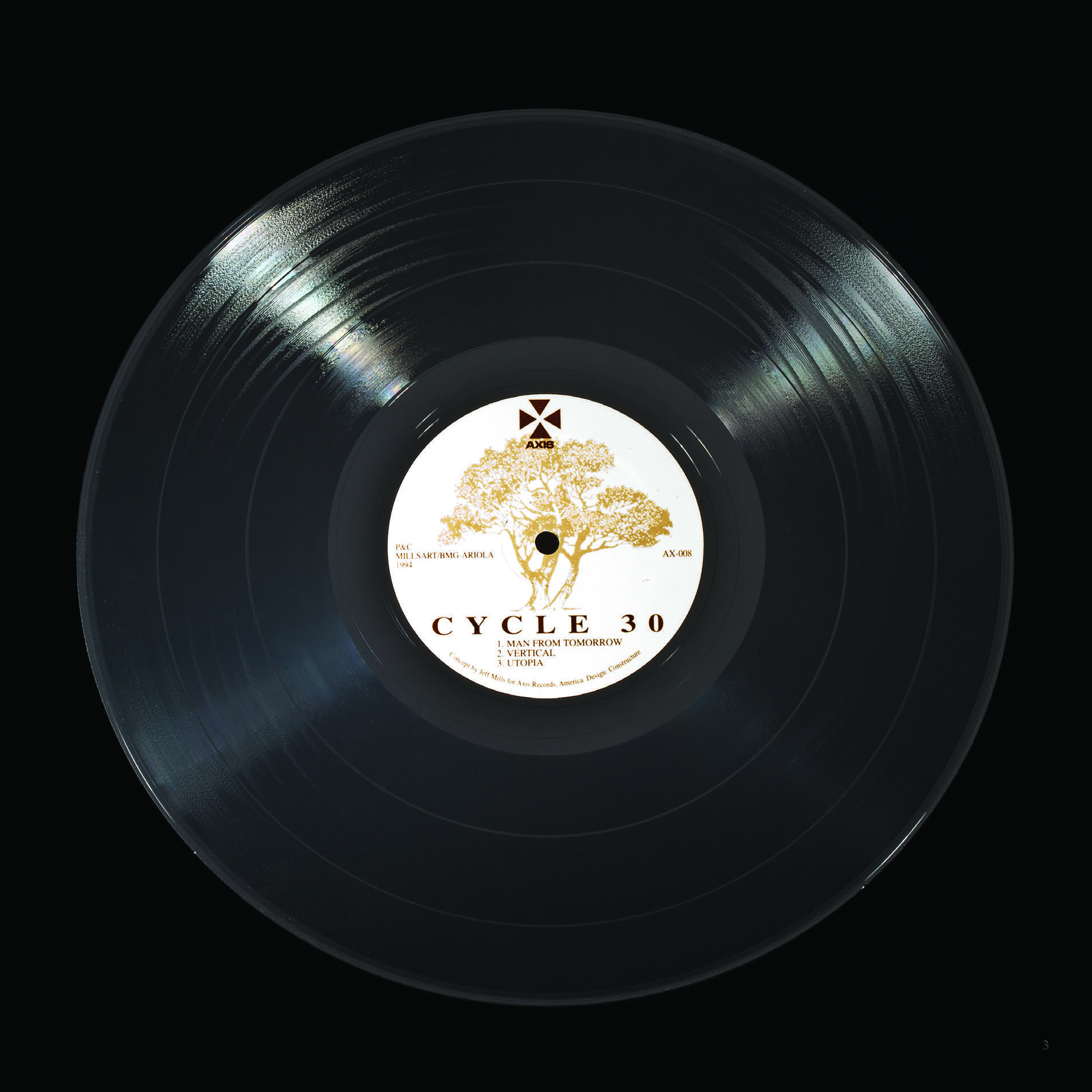
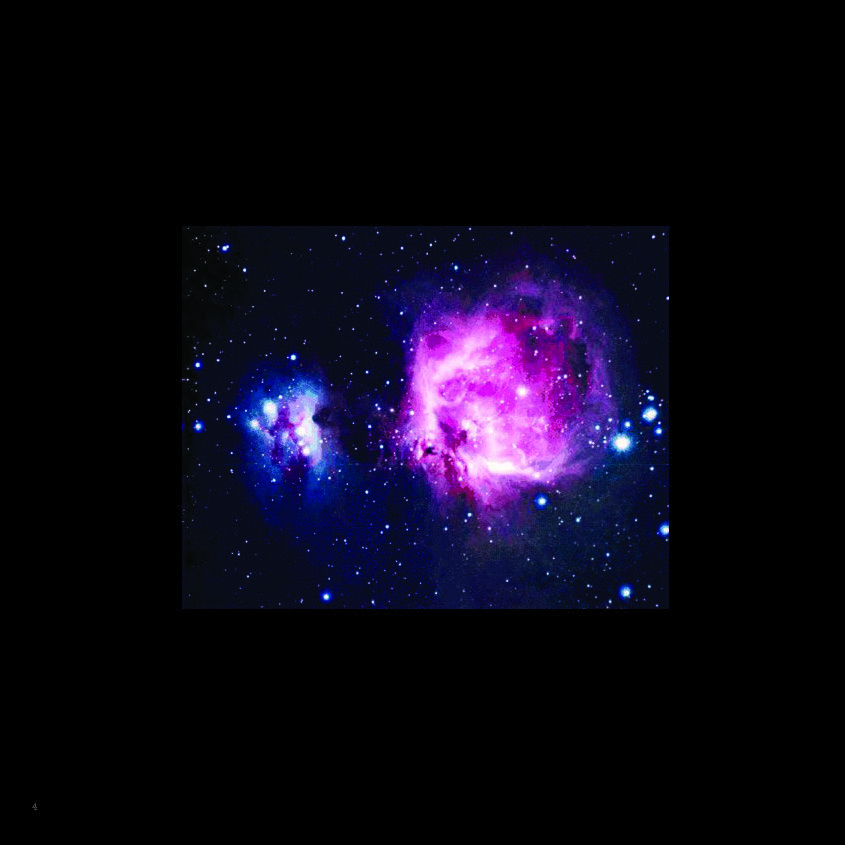
Cosmos Reference
(Pages 4 and 5)
Have you ever wondered why we tend to party in dark spaces? Why dance-oriented events are steep in social interactions, even if you’re dancing alone the entire time.
My theory is that this special setting was created as somewhat of a launch pad for the spirit and the soul. That the destination we all reach for is not here on Earth, but out in outer space amongst the Stars and other worlds. With each beat we hear, pushes us further and further away from a state of mind we’re accustom to. Perhaps this explains a lot about why these settings are designed so that the lighting and effects are above us, that the sound systems are dominating, yet provide a special device in which to transcend the mind, body and soul.

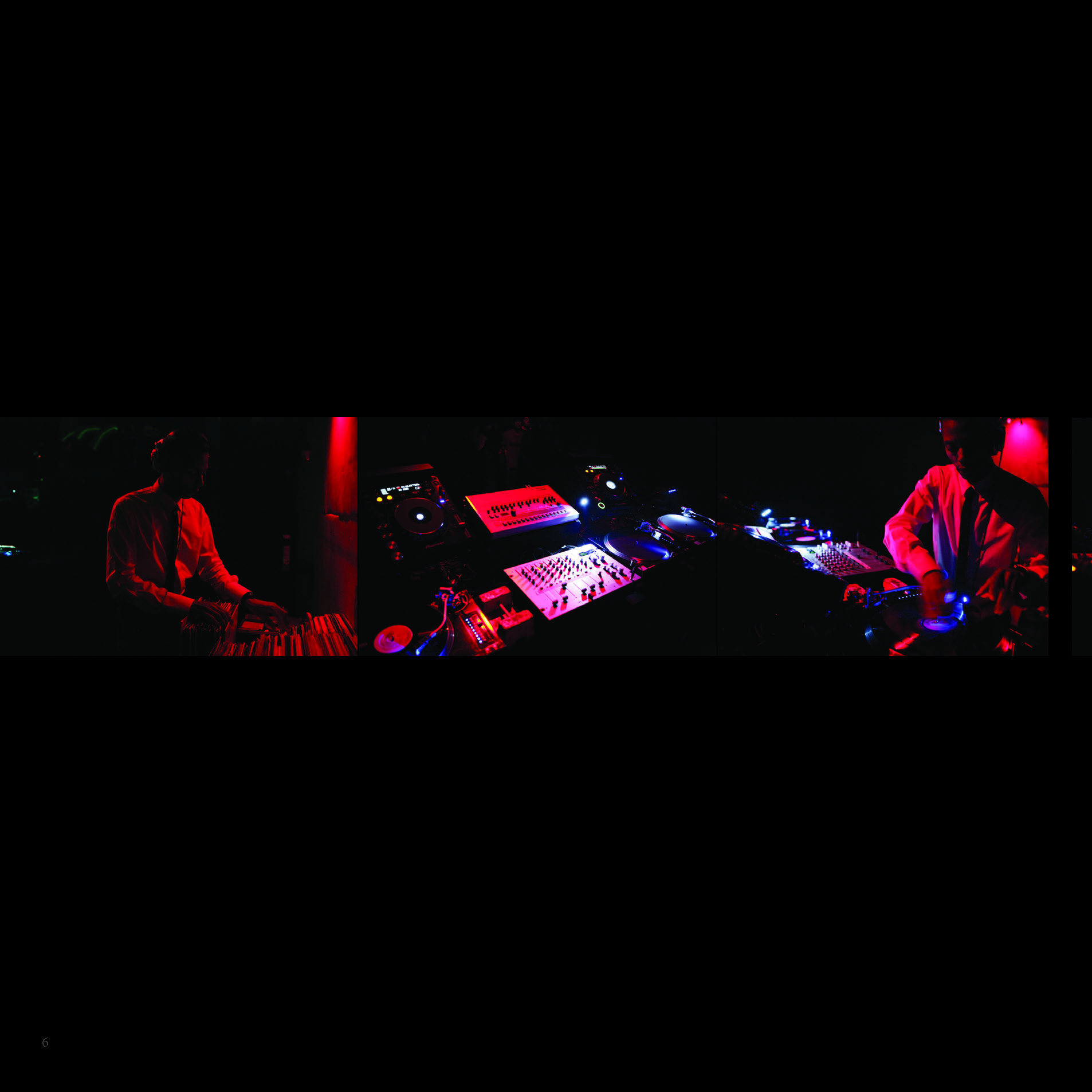
One Man Spaceship Event at Womb, Tokyo
(2006)
(Pages 6 and 7)
If there is one questionable element that comes with the schematics of being a DJ and frequently traveling from country to country, it is the aspect of isolation Granted, refined DJs have the access to immerse themselves into their surrounding, sometimes they can even attach their designated (DJ) area by installing privileged friends and VIPs to narrow the distance between them and the audience they’re playing for – an attempt to wrap the party around them, but this situation times out, especially if DJs are not social animals but find them selves in this precarious predicament due to being dedicated to the art form.
The public interactions can time out once the DJs leaves the venue, return back to the hotel and enters the stillness of an empty hotel room. The scene: luggage over in the corner, a few nice items hanging in the closet, a phone recharger still plugged into the wall socket next to the bed and all the signs of temporarily occupying borrowed space. Within minutes there can a transformation of being in the presence and touching the spirit of thousands of people to be being alone and in a way, cut off and detached. To be clear, not all DJs and artists experience this, but it becomes more apparent over time of the amount of time spent in solitude.
One Man Space addressed this subject from the positive side of the topic, using the narrative of space travel to transport the listener into the Cosmos alone, but with an objective that becomes larger as the journey progresses. Decisions are made without compromise, actions are made with explanations, plans are modified without debate, the aspect of “time” becomes a factor only if one choses to recognize it and most importantly, the objective can change due to how one feels in the moment. Though compromise can be useful, it has limitations. What this album points towards is the idea of “one mind, making one decision and being solely responsible for the consequences, whether good or bad is the most a human being can do. That by not having much social contact can actually be an asset.
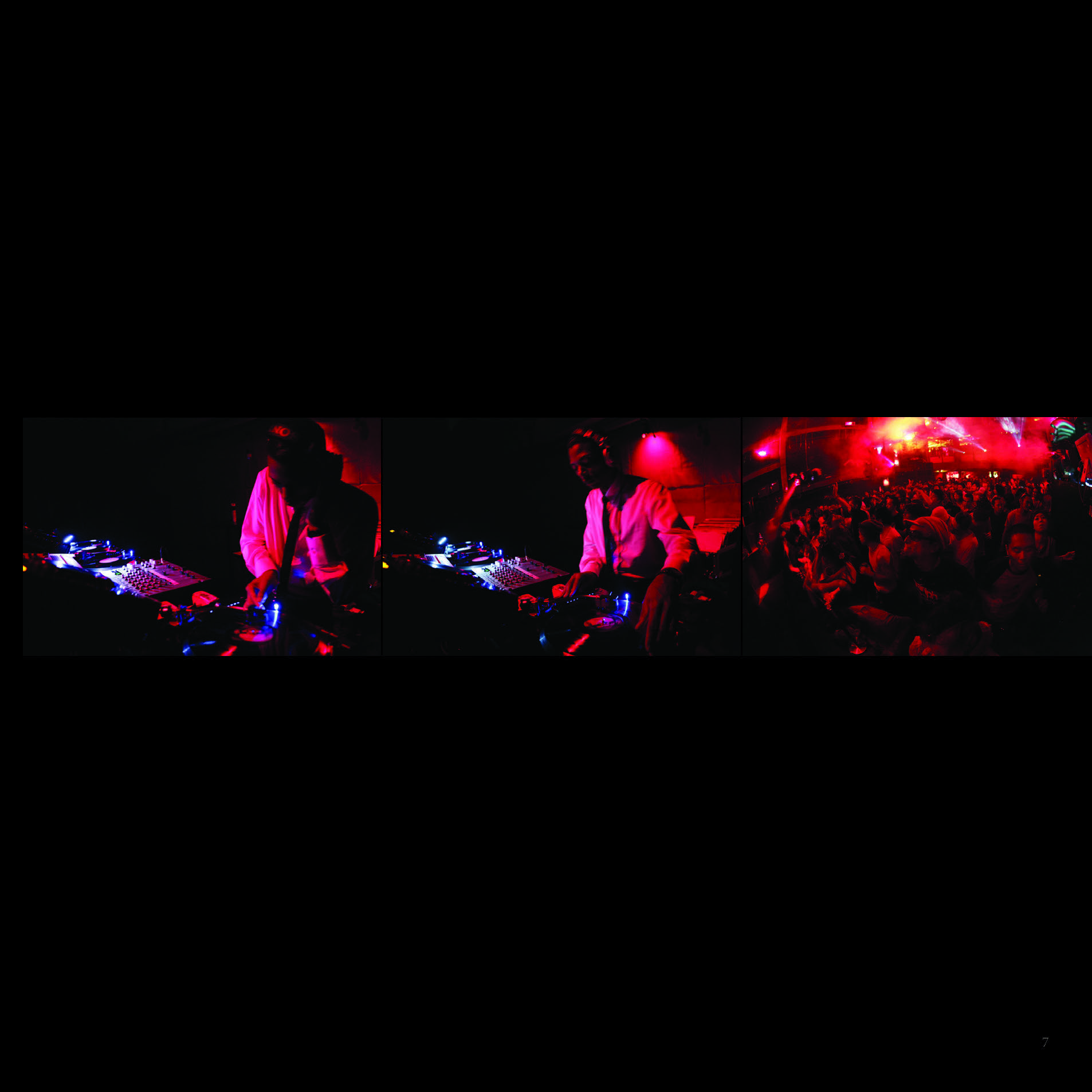
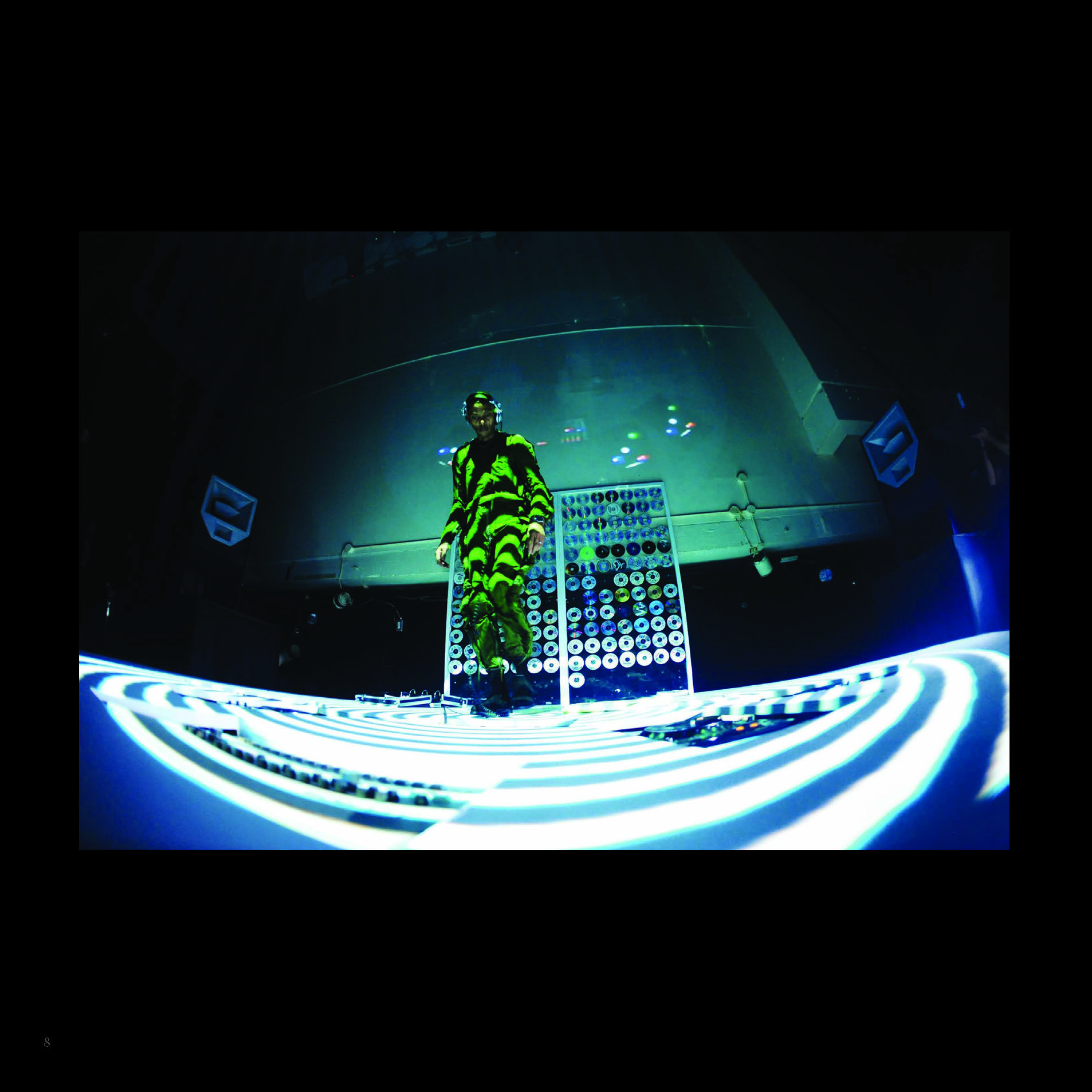
Sleeper Wakes Debut Event at Womb, Tokyo
(2010)
(Pages 8 and 9)
As a prelude to the debut performance of Sleeper Wakes at Womb, Jeff Mills creates an introduction performance that consist of two dancers for his return back to Earth after a extended journey throughout Space. Positioned in the center of the dance floor, two raised pedestals support the synchronized choreography of two dancers paying homage and reacting to the video scenes of Star Systems and planets. As the audience makes their way into the Main room of Womb, the two dancers and soundtracks has already begun the process, giving the impression that a ceremony had already started and that the early customers are witnessing something they weren’t supposed to actually see. The two silver covered dancers perform a 45-minute routine that transcends directly into the next phase of the carefully sequenced night program.
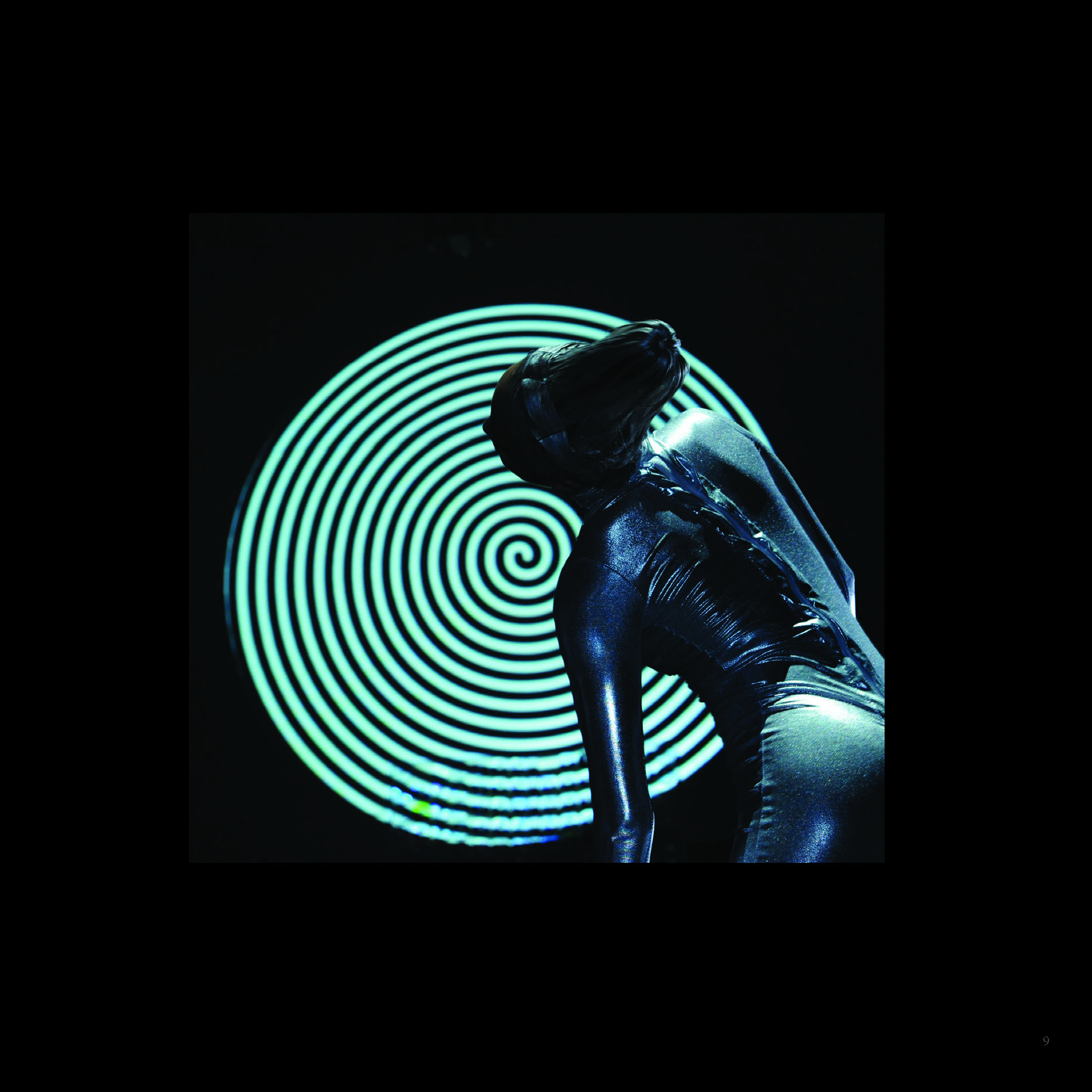
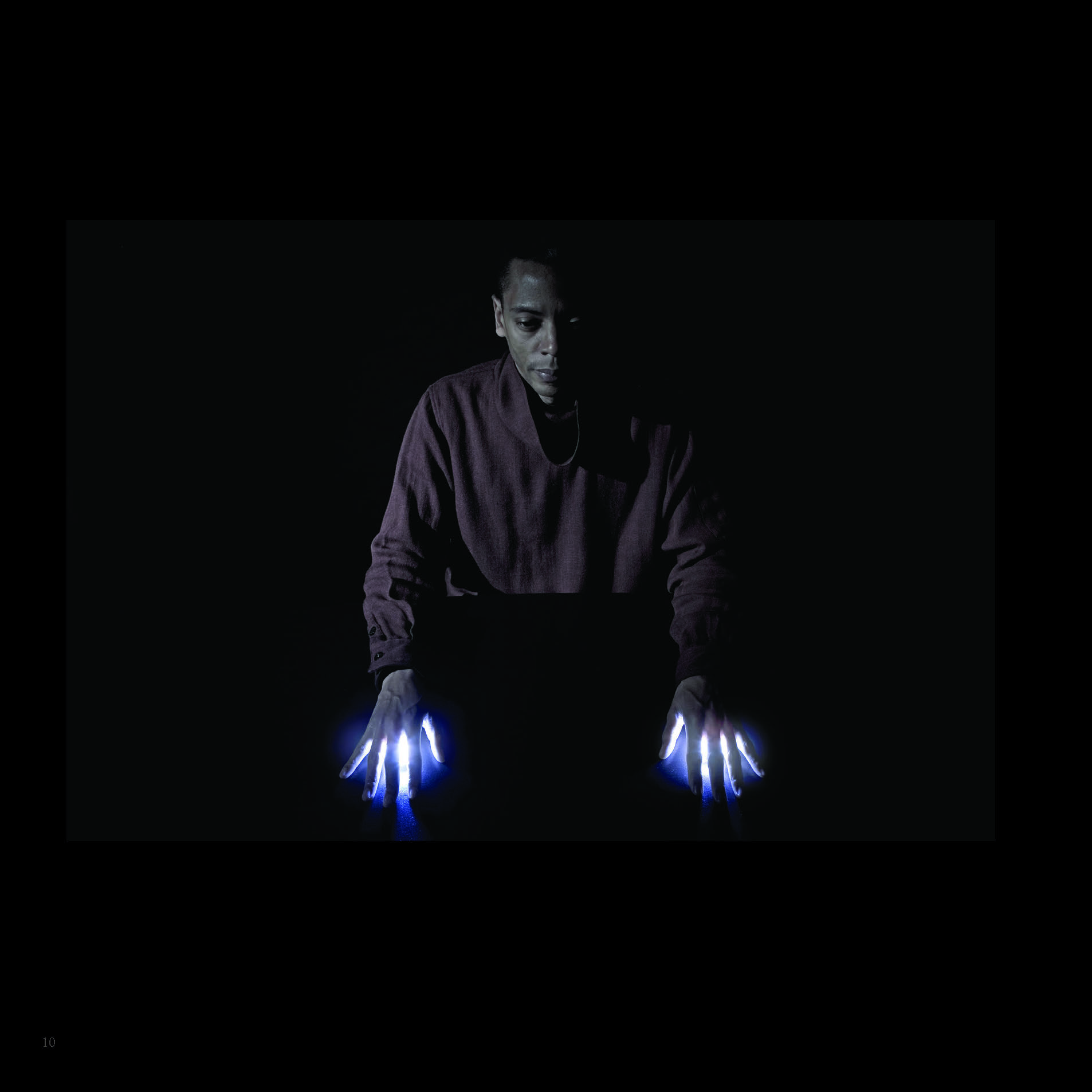
The Power – album – Jeff Mills
(2010)
(Page 10)
“As the Sleeper Wakes saga continues, we arrive at a crucial point where the integration back into Earth’s Culture becomes difficult and the drift towards a different type of isolation begins. Traveling 4 years throughout the Universe in search of discoveries has taken its mental toll and the price of an intervention is high. This album demonstrates the process of a person who gradually loses their sense of belonging. Obscure illusions brought on by an unique ability to control Electricity contracted in “The Occurrence” chapter creates a unwarranted threat to the worlds International Security. Severe detachments evolve that pushes the mind beyond acceptable limits.”
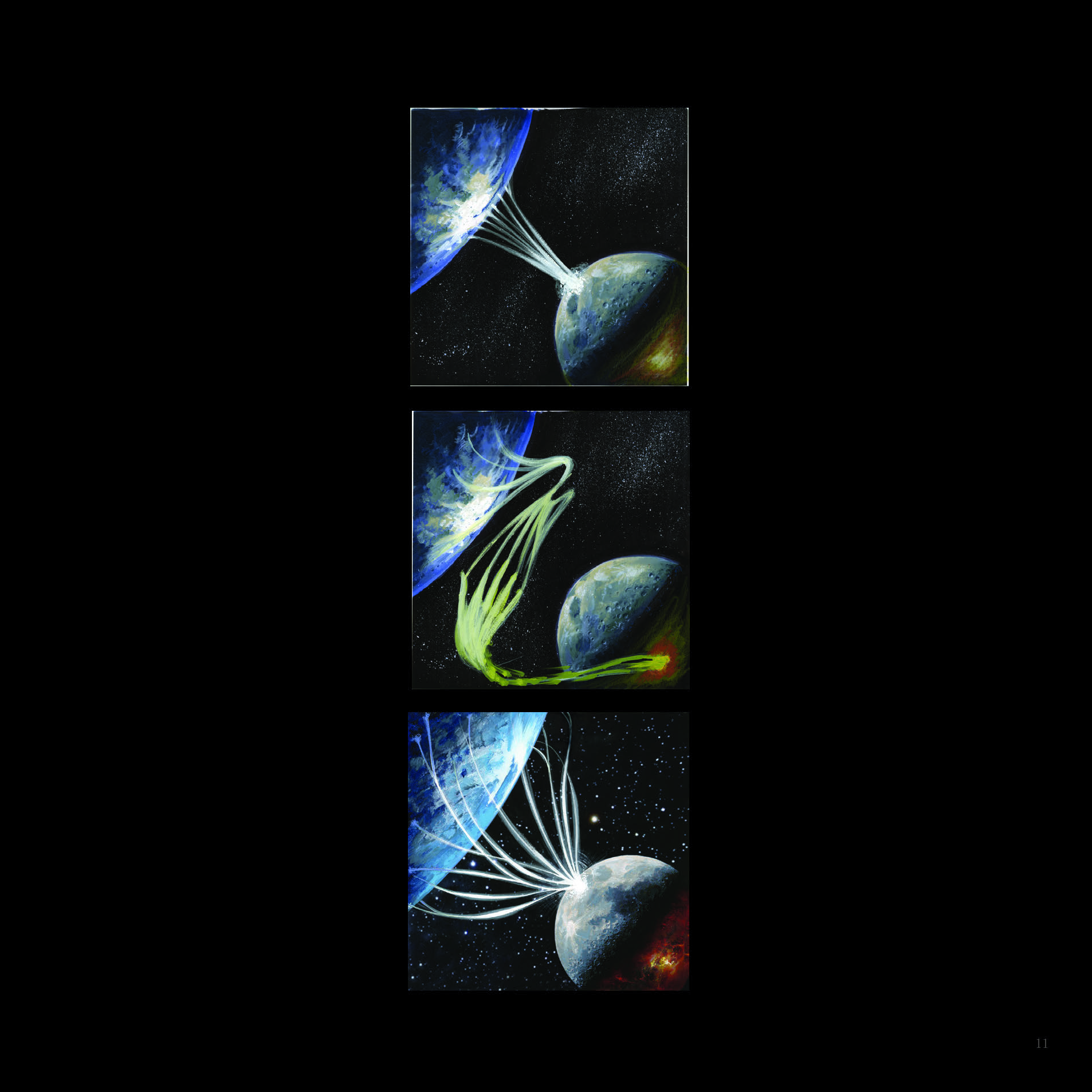
The Messenger – album “artwork sketches – Jeff Mills
(Page 11)
Sketch work by Thomas Gianni to create the front cover image of
“The Messenger “CD.
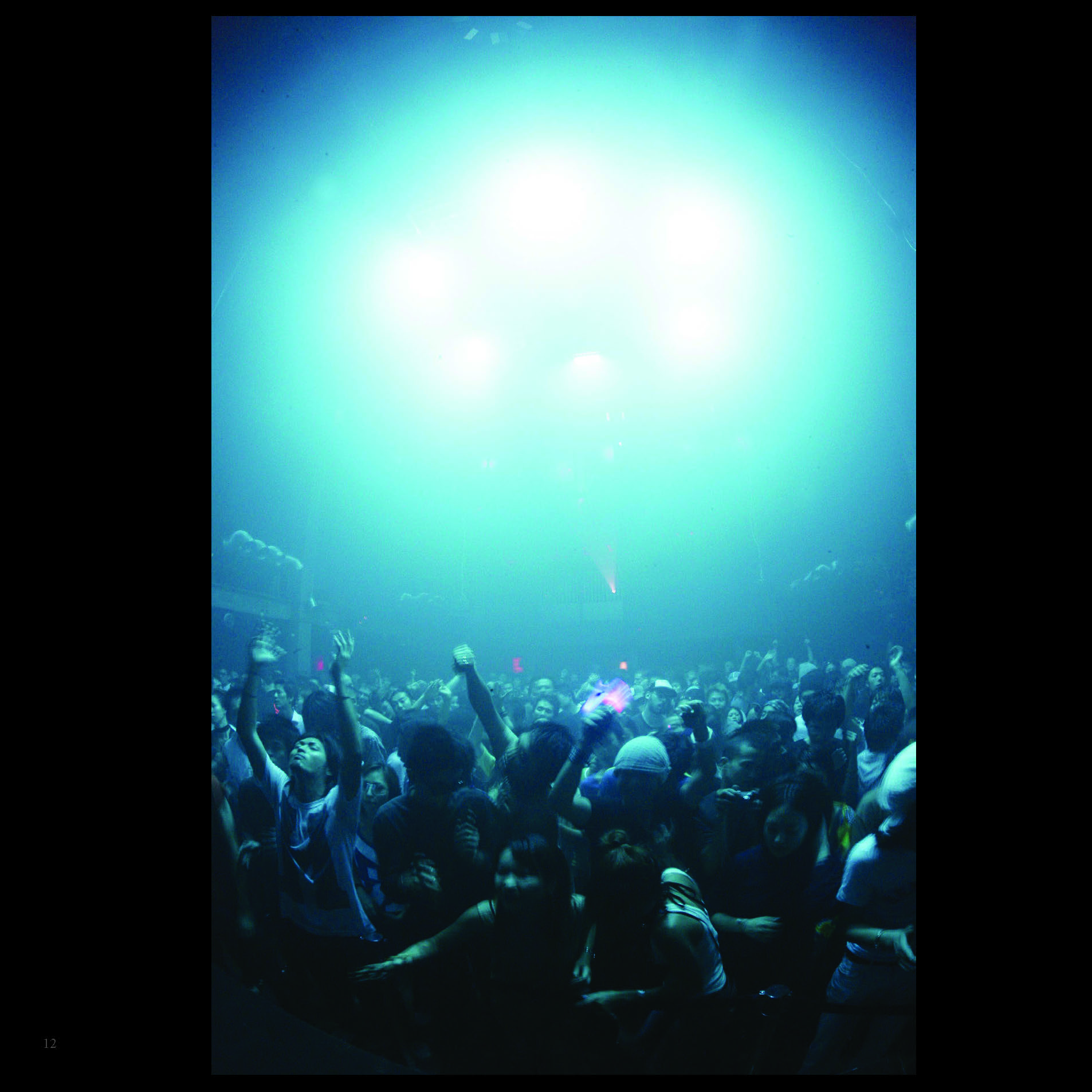
The Occurrence event At Womb, Tokyo
(2005)
(Page 12)
What makes a memorable moment? The unexpected, experience and something beyond the norm or reasonable assumption (?) Techno Music has shown us that it is these special moments that can rest within our longtime memory and become the catalyst for which we judge other experiences. And if we become conditioned to this effect, to the point that it doesn’t impact us as much, how can we enhance Techno Music to the point in which it explodes in ways we never imagined. What are the ways we can adopt from other creative fields to expand these immersive possibilities?
